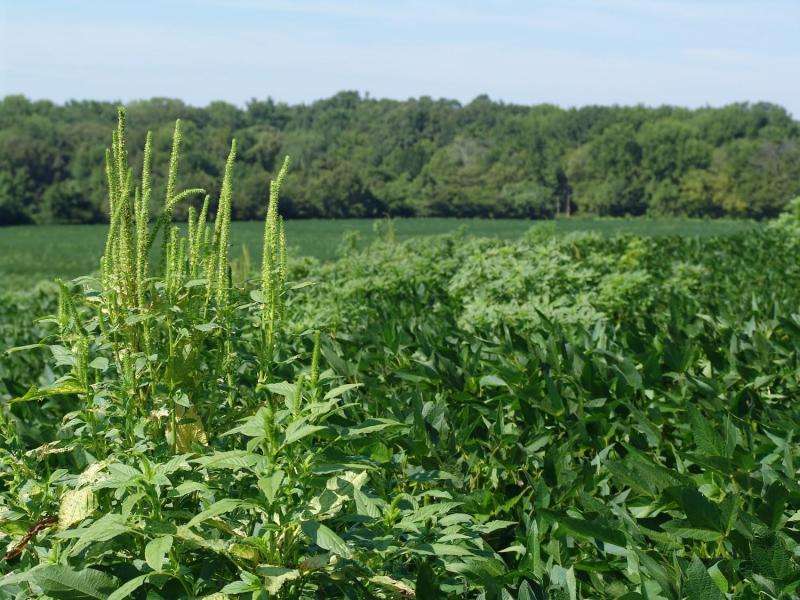Time of day can impact spray: PPO herbicides more effective when sprayed at midday

Some herbicides are more effective when applied at noon compared to early morning or late evening applications, according to data from the University of Tennessee Institute of Agriculture.
The study evaluated three protoporphyrinogen oxidase (PPO) herbicides applied to glyphosate-resistant Palmer amaranth in soybean plots at sunrise, noon and sunset. After 14 days, the noon applications on average performed 15-20 percent better than the sunrise applications. The noon applications outperformed the sunset applications by an average of approximately 10 percent.
"We're definitely getting better control when these herbicides are applied in the middle part of the day," says Garret Montgomery, lead author and doctoral student with UT's Department of Plant Sciences.
PPO herbicides work by inhibiting an enzyme involved in chlorophyll production. Researchers explain that this family of herbicides is significant to agricultural producers as it's the only post-emergence mode of action available for controlling glyphosate-resistant weeds in glyphosate-tolerant soybeans. Soybeans are Tennessee's top crop.
The study's findings were consistent with earlier research performed by UTIA and other universities on herbicides with different modes of action, like glufosinate. In these earlier studies, tested herbicides were also most effective when applied at midday.
"Being able to determine the optimal time of day to apply herbicides is important for several reasons," says Larry Steckel, row crop weed specialist with UTIA. "Perhaps most significantly, it can reduce the number of times farmers must apply these herbicides as they work to produce a crop. Weeds that are injured but not killed from a previous application will only get more difficult and expensive to remove."
"Using our herbicides as efficiently as possible could actually reduce the rate at which weeds evolve herbicide resistance," Steckel continues. "So this study has long-term implications for weed management."
The study was conducted at the West Tennessee AgResearch and Education Center in Jackson, Tennessee, as well as the Delta Research and Extension Center in Stoneville, Mississippi.
Montgomery presented the study February 9 at the Weed Science Society of America and Southern Weed Science Society annual meeting in San Juan, Puerto Rico. The paper is titled "Environmental Influences and Time of Day Effects on PPO-Inhibiting Herbicides." Additional co-authors were Steckel along with B.H. Lawrence, H.M. Edwards and J.A. Bond of Mississippi State University. The study was supported by the United Soybean Board, Cotton Incorporated and the National Association of Conservation Districts.
Through its mission of research, teaching and extension, the University of Tennessee Institute of Agriculture touches lives and provides Real. Life. Solutions. ag.tennessee.edu
Montgomery presented the study February 9 at the Weed Science Society of America and Southern Weed Science Society annual meeting in San Juan, Puerto Rico. The paper is titled "Environmental Influences and Time of Day Effects on PPO-Inhibiting Herbicides."
Provided by University of Tennessee at Knoxville

















